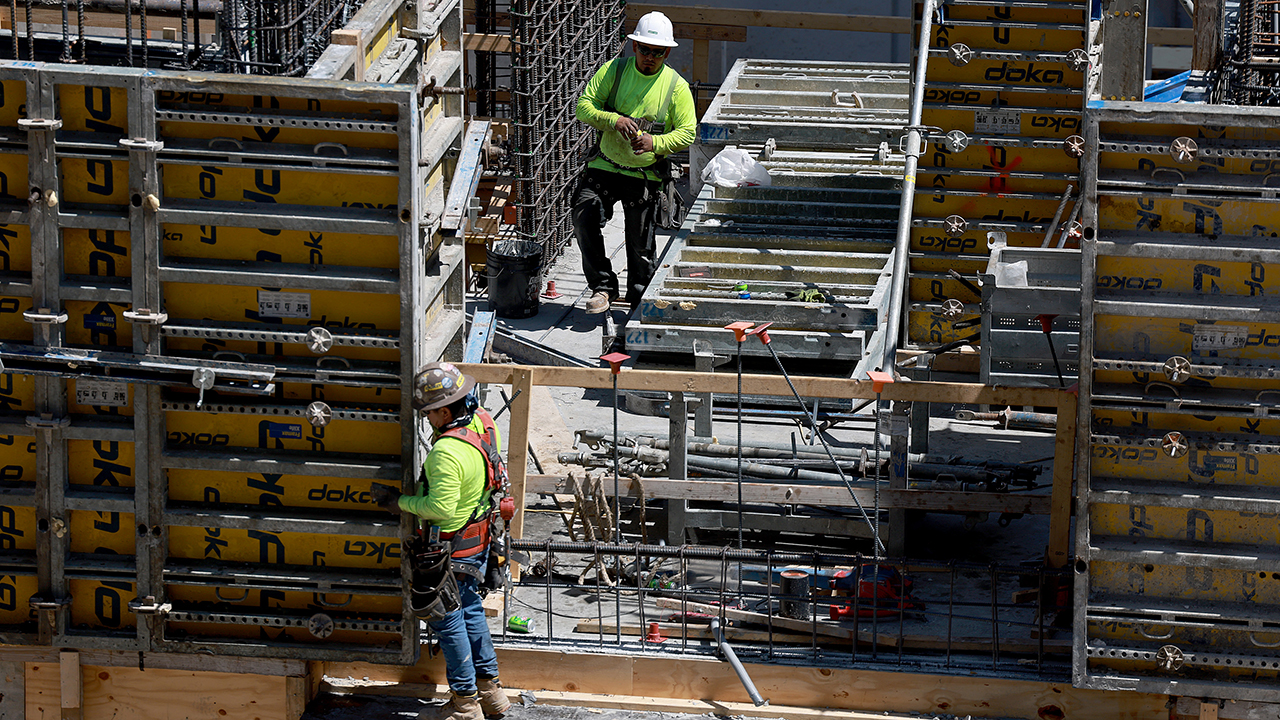US job growth beats expectations in April as economy adds 253,000 new positions
April jobs report shows US economy added 253,000 jobs last month
April's strong jobs report is not enough to ignite Wall Street: Michael Lee
Michael Lee Strategy founder Michael Lee argues 'massive bank contagion' will prohibit the robust April jobs report from turning around the stock market on 'Varney & Co.'
U.S. job growth continued to chug along at a healthy clip in April, as the labor market remained surprisingly resilient even in the face of rising interest rates, declining economic growth and bank turmoil.
Employers added 253,000 jobs in April, the Labor Department said in its monthly payroll report released Friday, easily beating the 180,000 jobs forecast by Refinitiv economists. The unemployment rate ticked lower to 3.4%, a historically low level, as more workers left the labor force.
Wages also accelerated last month, with average hourly earnings – a key measure of inflation – rising 0.5%, more than the 0.3% estimate. On an annual basis, wages rose 4.4% in April.
Although the report pointed to solid hiring in April, it also showed much weaker job growth over the previous two months. Gains for February and March were revised down by a total of 149,000 jobs to a respective 248,000 and 165,000, the government said.
FED RAISES INTEREST RATES A QUARTER POINT, HINTS AT POSSIBLE PAUSE
The Federal Reserve is closely watching the report for evidence that the labor market is finally softening after months of strong job gains as policymakers try to wrestle inflation under control. Although the consumer price index has cooled from a peak of 9.1% in June, it remains about three times higher than the pre-pandemic average.
The stronger-than-expected jobs figure, coupled with a burst in wage growth, could be a worrisome sign for the Fed, which approved a 10th straight interest rate hike on Wednesday afternoon before opening the door to a pause in the tightening cycle.
ARE TECH LAYOFFS THE CANARY IN THE US JOBS MARKET?
"Robust jobs numbers in the face of ongoing regional bank stress and debt ceiling uncertainty speaks to the strength of our economy, but it complicates the fight against inflation," said Mike Loewengart, head of model portfolio construction at Morgan Stanley Global Investment Office. "Today’s strong jobs report may be good news for job seekers, but it may make it more difficult for the Fed."

Construction workers on a job site on March 10, 2023 in Miami Beach, Florida. (Photo by Joe Raedle/Getty Images / Getty Images)
Job gains were broad-based last month, with the biggest gains in professional and business services (43,000), health care (40,000) and leisure and hospitality (31,000). Even industries that are more sensitive to higher interest rates, like construction and manufacturing, added workers last month.
Still, the outlook for the labor market remains hazy.
A spate of bank collapses this spring is threatening to further restrict economic growth and hiring by tightening lending standards and making it more difficult to acquire a loan. Borrowers may have to agree to more stringent terms like high interest rates as banks try to reduce the financial risk on their end. Fewer loans, in turn, would lead to less big-ticket spending by consumers and businesses.
SILVER LINING OF HIGHER INTEREST RATES: SAVINGS ACCOUNT RATES
Fed Chair Jerome Powell said Wednesday that tighter credit conditions are likely to weigh on economic activity, including hiring and inflation.

Now Hiring signs are displayed in front of restaurants in Rehoboth Beach, Delaware, on March 19, 2022. (Photo by STEFANI REYNOLDS/AFP via Getty Images / Getty Images)
GET FOX BUSINESS ON THE GO BY CLICKING HERE
There has also been a wave of notable layoffs over the past few months, and the list continues to grow. Amazon, Apple, Meta, Lyft, Facebook, Google, IBM, Morgan Stanley and Twitter are among the companies letting workers go.
For many economists, the possibility of unemployment rising has become a question of when, not if.
The central bank previously projected in March that the jobless rate will climb substantially higher to 4.6% and remain elevated in 2024 and 2025 as steeper rates continue to take their toll by pushing up borrowing costs. That could amount to more than 1 million job losses.
Hiking interest rates tends to create higher rates on consumer and business loans, which slow the economy by forcing employers to cut back on spending.
